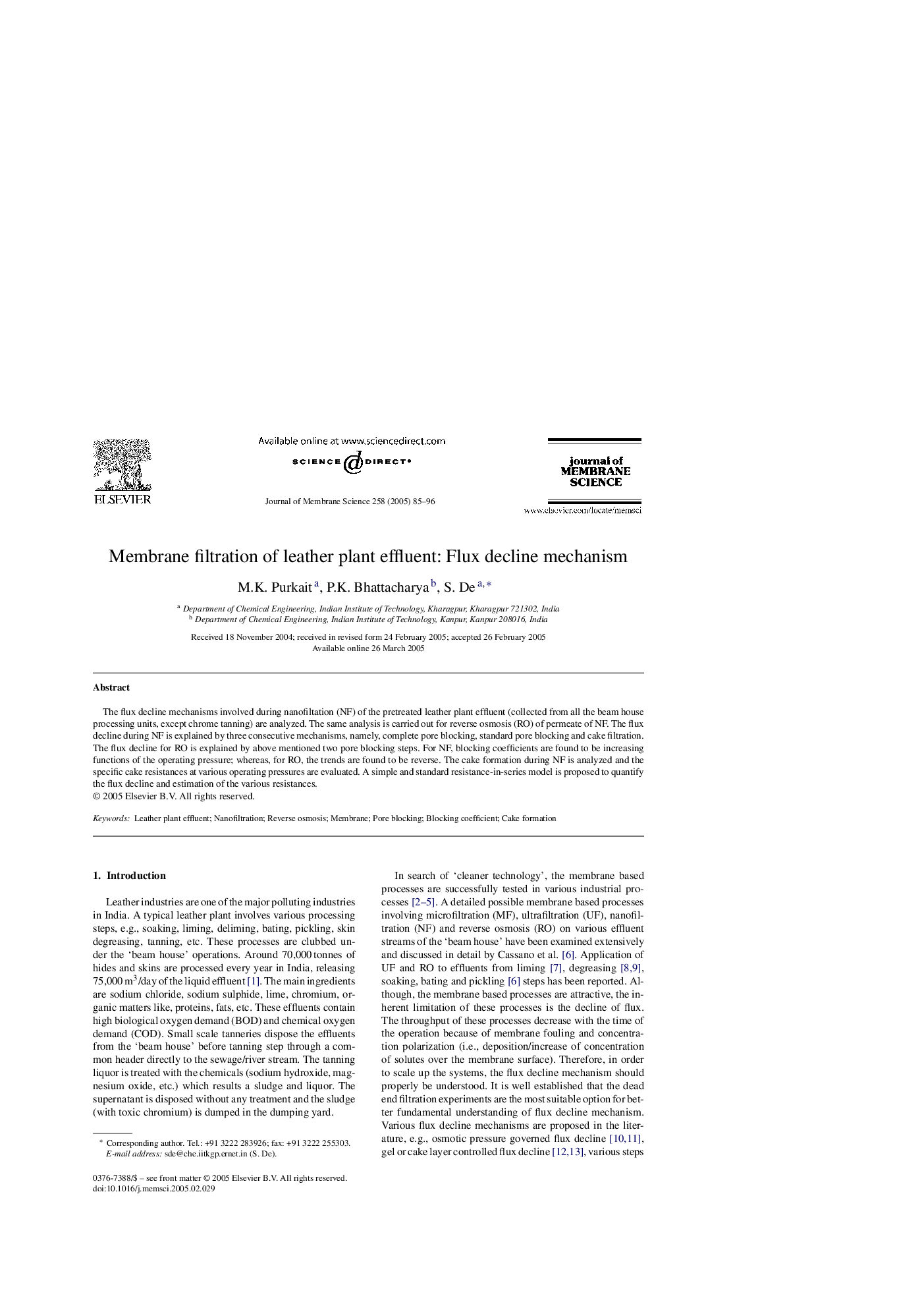| Article ID | Journal | Published Year | Pages | File Type |
|---|---|---|---|---|
| 9684762 | Journal of Membrane Science | 2005 | 12 Pages |
Abstract
The flux decline mechanisms involved during nanofiltation (NF) of the pretreated leather plant effluent (collected from all the beam house processing units, except chrome tanning) are analyzed. The same analysis is carried out for reverse osmosis (RO) of permeate of NF. The flux decline during NF is explained by three consecutive mechanisms, namely, complete pore blocking, standard pore blocking and cake filtration. The flux decline for RO is explained by above mentioned two pore blocking steps. For NF, blocking coefficients are found to be increasing functions of the operating pressure; whereas, for RO, the trends are found to be reverse. The cake formation during NF is analyzed and the specific cake resistances at various operating pressures are evaluated. A simple and standard resistance-in-series model is proposed to quantify the flux decline and estimation of the various resistances.
Related Topics
Physical Sciences and Engineering
Chemical Engineering
Filtration and Separation
Authors
M.K. Purkait, P.K. Bhattacharya, S. De,
